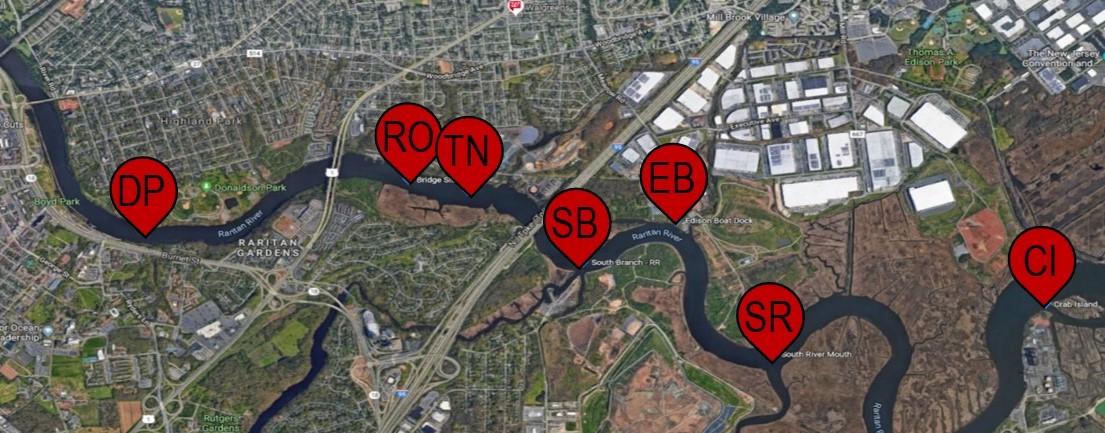
Figure 1. Map of sample sites along Raritan River: Donaldson Park (DP), Bridge Site – Route 1 (RO), Turnpike (TN), South Branch (SB), Edison Boat Dock (EB, South River Mouth (SR), Crab Island (CI).
Dr. Philip Sontag and Professor Katherine Dawson collaborated on a mini-grant project to understand the biogeochemical cycles of trace metal availability in the Fe rich sediment of the Raritan River. The purpose and focus of the project was to outline sediment sequential extraction and inductively coupled plasma optical emission spectroscopy, describe scientific methods used for lead (Pb), describe scientific methods used for Pb concentrations in chemical fractions of sediment from the Raritan River, provide total Pb and Pb sediment concentration data from sequential extractions and analyses, report sediment standard reference material recoveries and quality criterion, and assess the microbial diversity in associated sediments.
Seven sites were strategically sampled at key points along the Raritan River (Fig. 1) to provide a comprehensive assessment of municipal impacts (Donaldson Park, Edison Boat Dock), overlap with collaborators marsh study sites (Route 1 and Turnpike), assess impact of major tributaries (South Branch, South River Mouth), influence of a more saline environment (Crab Island).
Read the full report here
This project was supported by a 2019 Rutgers Raritan River Consortium Mini-grant.